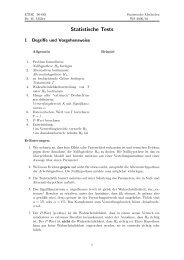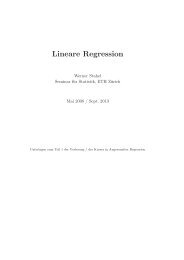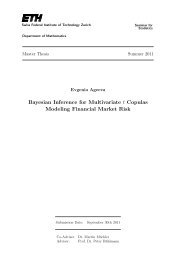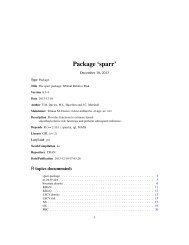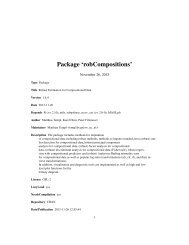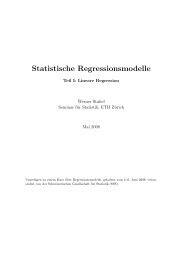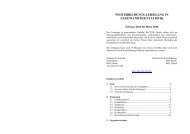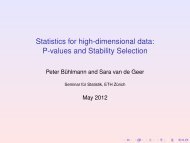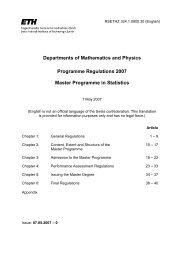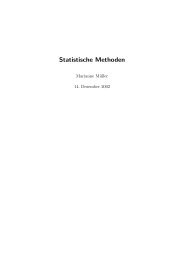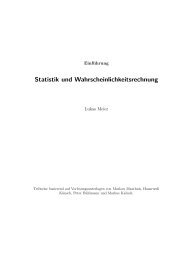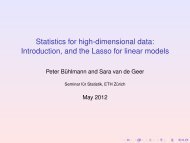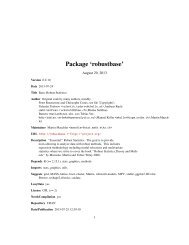Package 'rgenoud'
Package 'rgenoud'
Package 'rgenoud'
Create successful ePaper yourself
Turn your PDF publications into a flip-book with our unique Google optimized e-Paper software.
10 genoud<br />
likelihood) is nonlinear in the model’s parameters, the function to be optimized will generally not be<br />
globally concave and may have irregularities such as saddlepoints or discontinuities. Optimization<br />
methods that rely on derivatives of the objective function may be unable to find any optimum at all.<br />
Multiple local optima may exist, so that there is no guarantee that a derivative-based method will<br />
converge to the global optimum. On the other hand, algorithms that do not use derivative information<br />
(such as pure genetic algorithms) are for many problems needlessly poor at local hill climbing.<br />
Most statistical problems are regular in a neighborhood of the solution. Therefore, for some portion<br />
of the search space, derivative information is useful for such problems. Genoud also works well for<br />
problems that no derivative information exists. For additional documentation and examples please<br />
see http://sekhon.berkeley.edu/rgenoud.<br />
Value<br />
genoud returns a list with 7 objects. 8 objects are returned if the user has requested the hessian to<br />
be calculated at the solution. Please see the hessian option. The returned objects are:<br />
value<br />
par<br />
gradients<br />
generations<br />
This variable contains the fitness value at the solution. If lexical optimization<br />
was requested, it is a vector.<br />
This vector contains the parameter values found at the solution.<br />
This vector contains the gradients found at the solution. If no gradients were<br />
calculated, they are reported to be NA.<br />
This variable contains the number of generations genoud ran for.<br />
peakgeneration This variable contains the generation number at which genoud found the solution.<br />
pop.size<br />
operators<br />
hessian<br />
This variable contains the population size that genoud actually used. See pop.size<br />
for why this value may differ from the population size the user requested.<br />
This vector reports the actual number of operators (of each type) genoud used.<br />
Please see the Operators Section for details.<br />
If the user has requested the hessian matrix to be returned (via the hessian<br />
flag), the hessian at the solution will be returned. The user may use this matrix<br />
to calculate standard errors.<br />
Operators<br />
Genoud has nine operators that it uses. The integer values which are assigned to each of these operators<br />
(P1· · ·P9) are weights. Genoud calculates the sum of s = P 1 + P 2 + · · · + P 9. Each operator<br />
is assigned a weight equal to W n =<br />
s<br />
P n<br />
. The number of times an operator is called usually equals<br />
c n = W n × pop.size.<br />
Operators 6 (Simple Crossover) and 8 (Heuristic Crossover) require an even number of individuals<br />
to work on—i.e., they require two parents. Therefore, the pop.size variable and the operators sets<br />
must be such that these three operators have an even number of individuals to work with. If this<br />
does not occur, genoud automatically upwardly adjusts the population size to make this constraint<br />
hold.




